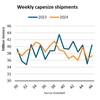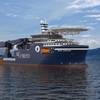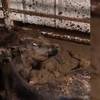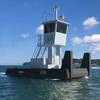SNAME 2008 Annual Meeting & Expo Set for Houston
The Society of Naval Architects and Marine Engineers (SNAME) will present the SNAME 2008 Annual Meeting October 15-17, 2008 in . This technical meeting will features new and expanded conference programming. The 2008 Annual Meeting will expand its historical technical conference offerings to include a comprehensive technical program and educational offerings in a broader array of professional areas of interest such as 25 Annual Meeting Papers, 12 Ship Production Symposium papers or presentations, 3 Outstanding Courses, 2 New Panels, 2 New Sessions, INNOVATION SESSIONS, and STUDENT ACTIVITIES
In 2008, SNAME will celebrate its 115th anniversary. The theme of the SNAME 2008 Annual Meeting is ”Celebrating our Past, Engineering our Future”. A part of the conference programming will take a retrospective look at the range of changes and innovations that have taken place in the profession and industry over these past 115 years. The SNAME 2008 Annual Meeting educational programming will build on the strengths of SNAME’s technical integrity.
In addition to these formal educational sessions the new 2008 Annual Meeting format will also include opportunities for peer-to-peer networking. The SNAME Annual Meeting is the only professional meeting that includes all of the diverse technical interests and professional specialties in naval architecture, marine engineering and marine sciences.
Networking at the SNAME 2008 Annual Meeting is a great way to keep up with new developments taking place across the entire profession. It’s also a great way to extend your personal contacts and professional resource base.
The EXPO will feature new products and services from some of the leading companies in our industry. Meeting and networking with exhibitors in the EXPO hall and in the networking sessions is a great way to stay current with new technologies and improved methods.
The SNAME 2008 Annual Meeting will once again feature Exhibitor Innovation Sessions in the EXPO hall. Past attendees have found these sessions very helpful in building a more in-depth understanding of new technologies and innovations in our industry. They found the question and answer features of these sessions to be particularly helpful.
The 25 Annual Meeting Papers are scheduled as follows:
Thursday, October 16
Maintaining Structural Integrity beyond Class Requirements
by A Stenseng, B R Tuff, P F Weber
Technical Challenges in Tanker Conversions
by E Kokarakis, V Dimoulas,
Structural Design and Analysis of FPSO Topside Module Supports
by L O Henriksen; B D Williams; X Wang; D Liu
On Buckling and Ultimate Strength of Perforated Plate Panels under Axial Compression: Experimental and Numerical Investigations with Design Formulations
by Ul-Nyeon Kim, Ick-Heung Choe, J K Paik
Fatigue assessment of ship structures using structural stress approach with experimental validation
by M H Kim, S M Kim, J M Lee, S W Kang
Environmental Engineering:
Environmental Contour Lines: A Method for Estimating Long Term Extremes by a Short Term Analysis
by S Haver, S R Winterstein
Hydrodynamics:
Application of the Free Wave Spectrum to Minimize and Control Wake Wash
by J Heimann; B L Hutchison; B J Racine
Conceptual Design and Hydrodynamic Analysis of a High-Speed Sealift Adjustable-Length Trimaran
by K J Maki, L J Doctors, R M Scher, W M , S H Rhee, A , R F Beck
Experimental Investigation on Stern-Boat Deployment System for Coast Guard Ship (paper not available yet)
by K H Jung, H H Chun, M C Kim, I Lee, K W Lee, T W Lim, J K Lee, K Kim, S Yoon, Y H Ryu
Ship Design :
Stability Testing of Oceanographic Research Vessels Reveals Weight Growth Trends
by M S Miller, T Althouse, D H Kristensen
Ship Operations:
Concrete LNG GBS Terminal Ship Collision Study
by F Wu, F Puskar, P Saad
Ballast Water Treatment Technology: Design, Risk Assessment, and Installation on a Tank Ship
by K J Reynolds, C Dorchak, P F Weber, R Matousek
Development of a Marine Kinematics Extraction Technique with Application to the Crown Princess Heeling Accident
by D A Crider; J M Falzarano; A M Reed; J S Spencer
Ship Propulsion:
COGAS Propulsion for LNG Ships
by E G Wiggins
Gas fuelled engine applications in ships - an overview
by T G Osberg, T Teo
Friday, October 17
Wave Induced Hull Girder Loads on Containerships
by J J Jensen, P T Pedersen, B Shi, S Wang, M Petricic, A E Mansour
Full Scale Measurement of a Large Container Carrier on the Far East - Europe Route
by H C Yu, J W Choi, G I Park, S Y Han, S C Tai
Maneuverability:
Optimal Thrust Allocation in a Dynamic Positioning System
by J A Leavitt
DP Safety for Offshore Drilling and Well Intervention Vessels
by H Chen, T Moan
Ship Design: :
Impact of Corrugations on Membrane LNGC Tank Sloshing
by T W Yung, Z Ding, J F Kuo
Human Factors integration process in warship design
by , F Testa
Ship Propulsion:
Performance Prediction of Cavitating Water-Jet Propulsors Using Viscous/Inviscid Interactive Method
by H Sun, S A Kinnas
Submersibles:
The Application of Classification to the Navy Submarine Rescue System
by R Thomas, A DeSpirito, R Bleiberg
Selection of Descent and Ascent Method for the WHOI RHOV
by R P Clark, C P Brown
The Ship Symposium Production Papers and Presentations scheduled are:
Thursday, October 16
SPS Papers
Ready to Design a Naval Ship? - Prove It!
by B Keane, H Fireman, J Hough, D Helgerson, C Whitcomb
Leading the Way for Mid-Tier Shipyards to Implement Design for Production Methodologies
by V Dlugokecki, D Fanguy, L Hepinstall
Economics of Hybrid Laser Arc Welding for Manufacturing Weight Optimized T-beams
by E D Oller, P A Blomquist, M Ludwig
Development and Qualification of Hybrid Laser-Arc Welding for HSLA-65 Steel
by P. Blomquist and D. Rondeau
Reaching Out to the Future Generation of Shipbuilders and Shipbuilding Leaders
by C Skiba, R Boutwell and
SPS Presentations
Measuring Quality and Improving Productivity through Lean Principles in a Marine Engineering Design Environment
by K Hogan and L Pecore
Friday, October 17
SPS Papers
The National Shipbuilding Research Program Improved Methods for the Generation of Full-Ship Simulation Analysis Models
by R. Wood , Stewart Moore
Enabling Interoperability through the Ship Life Cycle
by T Briggs, B Gischner, P Lazo, M Olson, J Vicedomine, K Wolsey
SPS Presentations
Navy Product Data Initiative (NPDI)
by D Slawski, J Fallone, R Lobsitz
Research on the Line Heating Information Considering Binding Conditions
by J Park, J Kim, J Shin, C Hyun, Y Doh, K Ko
Engineering and Production Optimization for Naval Vessel Construction
by T D Huang
Modeling and Simulation of Shipbuilding System by Integration of the Product, Process, Resource and Schedule Information
by J H Woo, J G Shin, YJ Song
Also new are two panel discussion on current topics of interests:
The Arctic Challenge - A Panel Discussion on Current and Future Arctic Marine Developments
Thursday, October 16th, 8:30am-10am
In recent years there has been increase interest in arctic resource development and shipping. In a new project is using the world’s first purpose built independent icebreaking tankers to export oil from the , while planning and front end engineering is underway for development of the giant Shtockman gas field.
In development of mineral resources is moving apace in the eastern arctic, while exploration and development activities are being initiated. Offshore oil and gas exploration is being planned in the .
All of these projects require a range of marine systems fit for arctic service including drillships, ice-management vessels, tankers and bulk carriers, and many other specialized vessels. The protection of the Arctic environment is critical and the interaction between all stakeholders is challenging.
The Arctic Section of SNAME has just concluded another successful IceTech Conference, in and now professionals attending the SNAME Annual Meeting can get themselves up to speed on what’s happening in the .
SNAME has assembled a panel of experts to discuss current and future arctic developments.
The panel will consist of:
Dr Carl-Arne Carlsen, Sr. Vice President, Director of Operations for Offshore Classification, Det norske Veritas
Mr Goran Wilkman Vice President of Technology and Business Development, Aker Arctic, Finland
Mr Victor Santos Pedro, Director of Marine Safety, Dept of Transport, Canada
Dr. Kirsi Tikka, Vice President, Technology and Business Development, American Bureau of Shipping
Moderator - Peter Noble, SNAME Vice President and Chief Naval Architect, ConocoPhillips
International Shipbuilding Opportunities and Obstacles
Friday, October 17th, 2:00pm - 4:00pm, Room
Recognizing that Shipbuilding is a truly worldwide industry where countries with long established ship building industries are being challenged by emerging new shipbuilding nations, and all are facing new challenges with rising energy and raw materials costs, SNAME has assembled a panel representing a true cross section of the world shipbuilding industry.
The panelists will each have an opportunity to discuss their views on:
The present state and future state of shipbuilding,
Their means and strategies to cope with the current business environment,
The future opportunities and obstacles as you see them
The floor will then be opened up for questions from the audience.
The panel will consist of:
Dr S K Lee, Sr VP, DSME, Korea
Mr V Kumar, Man Dir Bharati Shipyard Ltd,
Mr Brian Carter, Manager of Commercial Business Development, ,
Mr Torben Andersen, Sr VP Development ( Ret ), Odense Steel Shipyard,
Moderator: Peter Tang Jensen, Senior Vice President – Technology, ABS
In addition, SNAME 2008 will feature two Special Technical Sessions, in which presentations will be focused on a common theme.
On Thursday afternoon the Special Technical Session, Practical
Application of Rules and Regulations will feature presentations by representatives of three of the leading classification societies
Evaluation of the Environmental Risk of Aframax Tankers
Presented by Jonathan McGregor of Bureau Veritas: a discussion of the possible changes to Aframax tanker designs which would improve their performance in grounding incidents.
Safety Assessment of the Aged Ship
Presented by Lin Li of The American Bureau of Shipping: a presentation of the procedure necessary to conduct a safety
assessment of a 20 to 25 year old vessel such as might be necessary for a conversion or service life extension.
Can Small Tankers Afford Not To Be Double ?
Presented by Jonathon Morley of Lloyd's Register: The challenges facing the naval architect when designing a tanker of less than 5000 dwt in compliance with the regulations requiring double hulls.
These presentations address topics of interest to naval architects who interact with the classification societies on a regular basis. The presentations focus on the practical application of different aspect of the rules. Examples of the applied rules are given as guidance.












